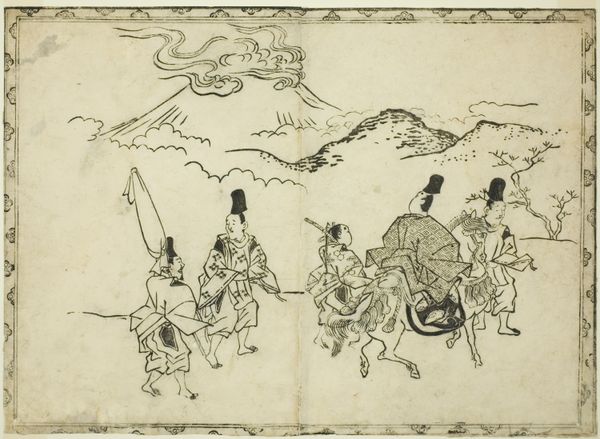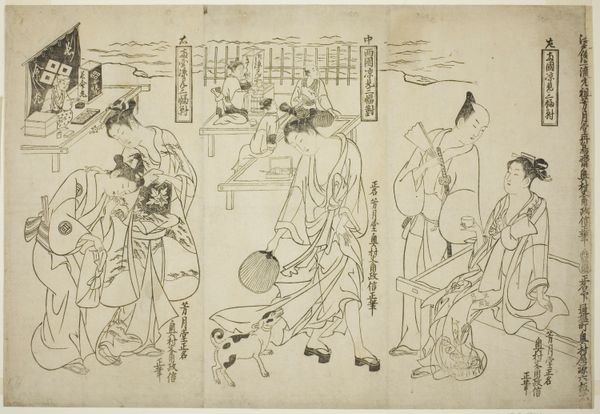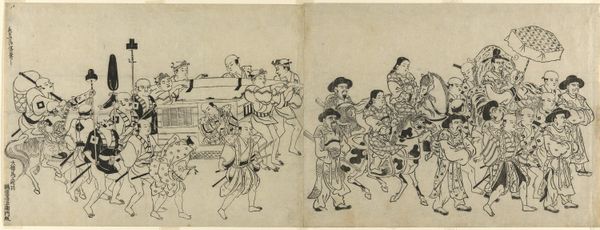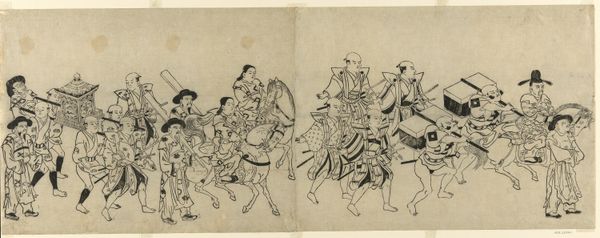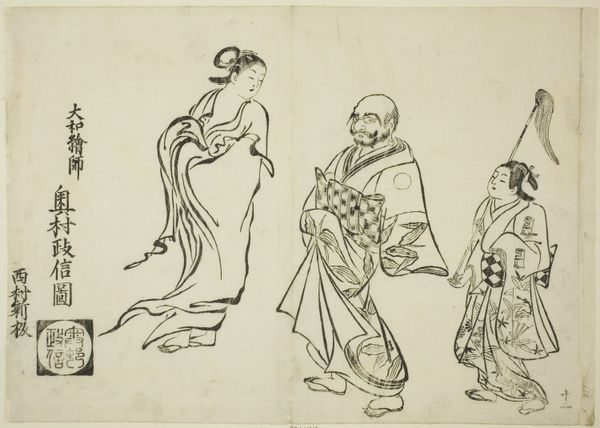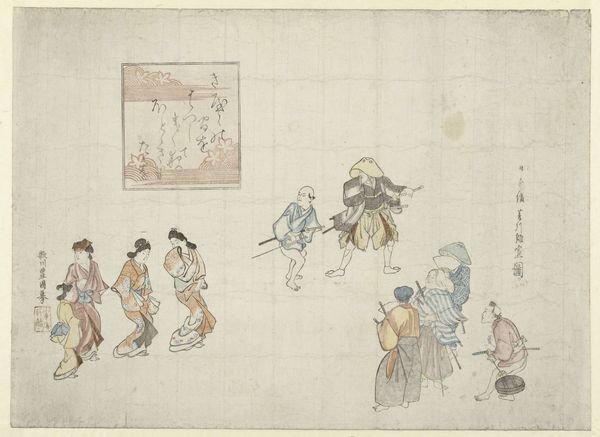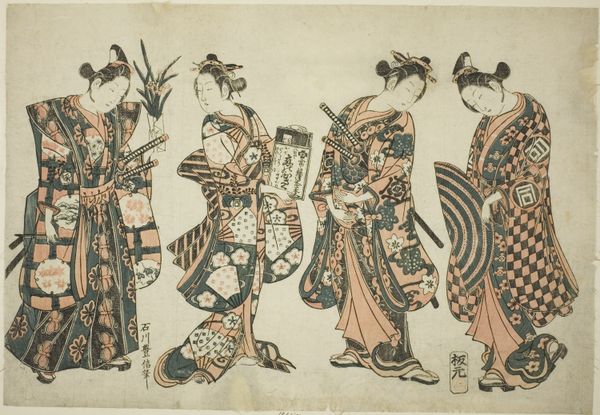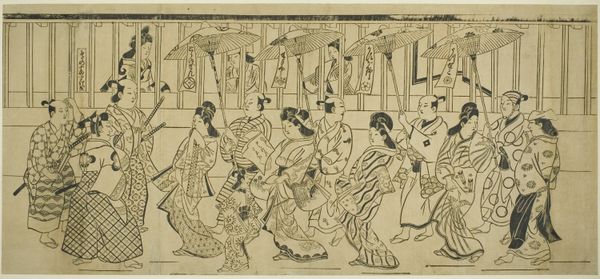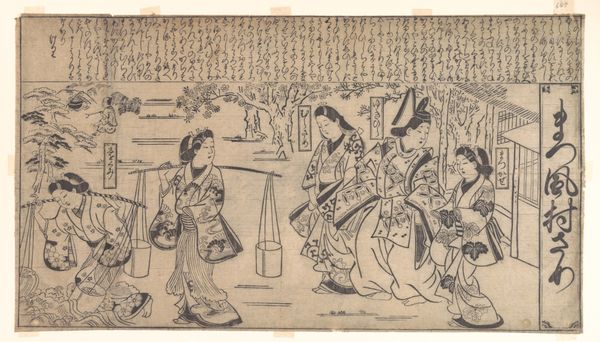
drawing, ink
#
drawing
#
narrative-art
#
asian-art
#
figuration
#
ink
#
history-painting
Dimensions: 34.9 × 355 cm
Copyright: Public Domain
Curator: This delicate ink drawing on paper is attributed to Su Liupeng, and it's called "Barbarian Envoys Presenting Tribute." It was created sometime between 1644 and 1911, during the Qing Dynasty. Editor: It feels so fragile. Looking closely, the thinness of the paper really highlights the deliberate economy of line— almost like a preliminary sketch, even though it clearly has narrative intent. I'm struck by the subtle texture too; the tooth of the paper contributes to the hazy, ethereal feel. Curator: The figures are rendered with incredibly fine lines, almost as if they're whispering secrets across the ages. Note the careful depiction of clothing, meant to convey rank, and, indeed, "otherness". The act of presentation, the tribute itself, carries great symbolic weight, acknowledging hierarchical relationships. Editor: Absolutely, you see it right away in how labor is presented! The raw materials - silk and ink - contrast against what is most likely a court atelier context, which gives rise to an artistic dialogue around patronage. How else could you support the cultural narrative expressed in the visual content? Curator: Precisely! And if we unpack that patronage further, we must consider the psychological implications. The "barbarian envoys" perform their assigned roles; their tribute reinforces the Emperor's authority and Heaven-ordained mandate. The drawing speaks volumes about cultural power dynamics, playing out on a symbolic stage. Editor: It makes you wonder about access to the artmaking process. Were "barbarians" even considered as participants? That distinction would reflect more significant divisions across economic access, cultural inclusion, and political standing during the Qing period. Curator: Those power dynamics run so deep that even in the seemingly mundane details, you get that interplay between perception and presentation, so crucial in intercultural communication even today. Editor: A great case study for the role of artistic labor when reflecting unequal cultural exchange!
Comments
No comments
Be the first to comment and join the conversation on the ultimate creative platform.

